-
Posts
151 -
Joined
-
Last visited
Content Type
Forums
Detector Prospector Home
Detector Database
Downloads
Posts posted by brogansown
-
-
Roughwater,
Many years ago, I had a construction project in Nome and at that time the BEMA M dredge was operating about a mile off-shore just west of the jetty built to off-load barges. At that time, workers were ferried out to the Dredge in a helicopter at the first of the week and brought home at week's end. Don't know how successful it was, but probably was the fore-runner of the current small barges on the show.
While I was there college kids and others came in the summer and panned the beaches right at Nome and many made enough to go to school the next year. They sold small vials of gold to tourists and I still have a couple of them somewhere.
I brought my cement up from Seattle on my two barges and gave them to a concrete supplier and he separated the sand and aggregate from the beaches. He ran all the sand over a large sluice and made even more profit from the gold he got. Even 100 years after gold was discovered in Nome a good part of their economy relied on it.
Gary
-
JW,
I use the 15 x 12 inch Commander Mono and the so called "Joey" 9inch DD coil. Although we sometimes use the 10" coil that comes standard with the Minelab. I have both a 3000 and a 4500 and was impressed with the Commander coil's ability to find even small shotgun pellets the two. But lately with shoulder problems, I'm using the GB 2 and it's opening up old ground. Thanks.
-
JW,
Don't think any SDC 2300's have been over the site, but a GPZ 7000 has. Yes we do use the DD coils on our Minelabs and that is what I have on the 4500 now. I do find pellets with my large Commander Mono coil on the 4500, but pin-pointing them takes a lot of time. Thanks for the comments.
Gary
-
Yes it is Fred and I thought about that too. I know of least 10 guys who have been over this patch, mostly with Minelabs. So I suppose they are ignoring backward signals and blank-outs and of course probably wouldn't have gotten the pellets. But the two big nuggets, the copper wire, the bullets and cartridges should have been found. My brother and I were working theouter edges too.
-
Last week during a slight break in the heat, my brother and I took our Minelabs and GB 2's out for some detecting in a heavily hammered patch. We didn't find anything with the Minelabs, but both got over a gram and a half with our Gold Bugs. There had been a slight rain the night before, but otherwise conditions were the same as previous skunk-outs in that location. I think our success was probably due to careful ground balancing and swinging very very slow and as close to the ground as possible. It is certainly much harder than in the "good old day," but they are still out there. We just need to remember that this is just a great hobby and like golf ever once in awhile we get a bogey.
But of course along with the nuggets there is trash and in our case-nails and tacks, shotgun pellets, old lead bullets, cartridges, pick handle wedge, copper wire, iron wire and rusty stuff.
-
Steve,
Thanks for all this information. At the Museum we often get undecipherable donations and requests to identify objects that makes our foreheads wrinkle. All of us who detect, find bullets, cartridges and complete cartridges by the hand-fulls and many are rare. Recently I stumbled upon a site that specializes in Ammunition that has a forum and was able to identify some of our bullets. The site is at www.iaaforum.org. Thanks again.
-
I feel better now. Thought I was the only guy digging up loads of trash with only a nugget every once in awhile. If Steve's trash to treasure ratio is that stilted, there is hope in our future.
-
What Brian and then Steve said--Whink from Walmart. Will eat away all the quartz if you leave the specimen in for a month or so and change the Whink occasionally. Remember though, only use plastic and not your wife's porcelain or glass bowls, it etches that too. We've never had any accidents or problems with it.
Gary
-
My neighbor was cleaning out his mother's shed and discovered a box of mining items-gold pans, gold scales, picks, etc. and this hammered iron spoon, just like the traditional horn spoons discussed earlier. It is 8 and 5/8 inches long and about an inch and a half deep. Very sturdy and well used. I had no idea the spoons even existed prior to the Forum's earlier post on the horn variety.
-
I don't know anything about Mr. Lyne, but as a former nuclear engineer, I can tell you though, that Chris is right, Gamma or cosmic or x-rays or any other high frequency rays just will not have any noticeable effect on gold or black sand. Basically the gamma rays are going to pass right through small layers of sand with or without gold particles. At nuclear reactor sites the gamma rays were shielded by 20 feet of water, 6 to 8 feet or high density concrete or a foot or two of lead; the beta rays by lead sheeting and the alpha's by a piece of paper. Bricks of gold would be a better shield than lead, but cost prohibitive as we all know.
And of course you can't neutralize radiation-you can clean it, extract it and concentrate it and coat it with ceramics for storage as we did at the National Reactor Testing Station.
You could, I suppose bombard gold with certain frequencies of radiation, detect the back scatter and analyze that signature to determine the presence of gold and you would have a nuclear metal detector. But the weight of the shielding and all the detection equipment would be prohibitively unweildy. Soils labs use density meters to test for compaction that have radioactive pellets sheilded up inside, that give compaction readings when pushed down into a hole the soil. Sorry for rambling on so much.
-
The attached photos can't compare to you guys' gold, coins, copper, etc., but they were used by the "old timers" to squeeze out a few more grams of gold from crevices in the bedrock. The second photo is a gold sorting tray found on a tailing pile. Similar tray can be seen in Charles Christian Nahl's painting "Saturday Night in the Mines."
-
Reporting back on the Gp 3500 repairs. My brother's 3500 is repaired and working very well. The problem was located at the point where the power leads come into the circuit boards. What appeared to be a control unit was fried, so my brother decided to fix it himself. But he couldn't find the burnt component anywhere.
A friend gave us his broken 3500 and my brother cut out a one inch chunk of circuit board on both machines and glued the friend's still good piece into his machine. After soldering the piece at six locations we took it for a test run. Worked perfectly and we found gold that day.
This repair is not for the faint hearted, as the entire circuit is covered with a white coating that doesn't seem to dissolve and has to be scraped away to expose the damaged components. And the parts don't have a known numbering system. But remember it's just an electronic circuit though and follows all the rules of electronics. Sure would be nice to have a circuit diagram since Minelab no longer wants to repair the older models. We could keep them running forever.
My brothers restore old cars and since the auto dealerships, like Minelab don't and really couldn't supply parts for the old machines, search the world for parts to bring these old automobiles back to life.
-
The older the electronic scrap is, the more gold there will be in it. More than 40 years ago, I repaired old televisions and some of the tuners had solid gold buttons as contacts. Those that weren't gold were silver. Some of the old Sears gas stoves had platinum igniters and of course there were platinum wires in spark plugs. The earliest computer processors chips had solid gold wires, although very tiny. But I would guess now that the gold plating on wires is only a few atoms thick, as manufacturers try to trim costs. So now many use acids to dissolve away the substrate to release those thin layers of gold.
I would guess that unless you plan to set up a major gold recovery operation, the cost of chemicals, equipment, ventilation, etc. for small volume recovery would actually end up costing more money than the gold gecovered. Would be kinda fun though.
-
LipCa,
I usually use the Minelab 4500 with a 14 inch oval Commander coil, but recently have been using an old Joey coil. But I think next year I'll at least try my GP 3000 with that bigger coil, because the last time I used it, I was having good success with small nuggets.
Gary
-
After clearing a patch with the Minelabs, it's a good idea to detect that area very slowly with the Gold Bug 2, as evidenced by the nuggets found this November in totally worked out patches. The larger specimen could have up to 6 grams in it and the bigger solid weighs in at 1.7 grams. I assume, of course, that the 7000 will find even more down deep, but I don't have one.
-
Thanks Steve. Quite a number of people have ask and this will help.
Gary
-
Are the Nokta Fors Core and Gold machines multi purpose, ie. coins, relics and gold? I'm constantly asked by newbies which machine should they buy and most want the more inexpensive machines. Many have been happy with the Gold Bug Pro or Gold Bug 2 for gold at least.
-
If we can just remember, for most of us, this is just a hobby and we don't have to make a profit every time we go out. Finding eight pieces of gold no matter how small is a victory and each is treasure in my book. The real enjoyment of our hobby is getting out in the hills where there is solitude, spectacular views and wild animals every trip. And the only thought in our minds for eight solid hours is "was that a signal."
Don't get me wrong, a big nugget is better, but the Gold Bug 2 is much lighter and easier on the body and it does produce gold, every time. We take along our Minelabs and almost every trip use them, but are finding less gold than with the Fisher. Thanks for the data Steve.
-
Interesting thing about those old shovels-it took 9 to 14 pieces to make one, not counting the handle. Today we stamp shovels out of one piece of metal and the handles are a straight shaft of wood versus a double curve handle for the "old miner's" shovels. The name of the maker will be on the top tang and some have been found with Chinese markings. Historic find-good job.
-
I use two picks. A large pick/crutch with a magnet on top for the Minelab and an Austrian ice pick/crutch for the Gold Bug 2. I have no magnet on the ice pick, so I have a magnet on a key retriever on my belt that works great. My picks are long so I can use them as a crutch on steep hillsides, etc. Don't normally use a crutch otherwise.
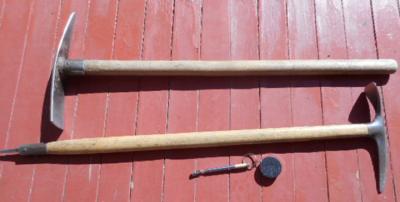
-
4500, Gold Bug 2 and a few with an old Troy Shadow X5 with a 5 inch coil
-
Thanks guys for the help. I'll get the addresses to my brother and report back when and if it is resolved.
Gary
-
Last week my brother's GP 3500 quit working right in the middle of a patch. We've tried new cables, coils, earphones and switches, so we know it is internal. Who repairs the older Minelabs-does Minelab or is there an independent repair expert out there? We've heard that Minelab doesn't support the older models, but don't know that for sure.
-
Although I read every scientific journal I can get my hands on and appreciate every new electronic gadget, instrument and advancement that hits the stores, I don't plan to buy a GPZ 7000. For two basic reasons-I can't afford it and after watching it in action and seeing the coil weigh issue, I realize I just wouldn't be able to handle the unit physically for as long as I hunt. And I think that is too bad, because I'm sure I would find a lot of nuggets with it and I believe those of you who can afford one are getting gold.
I am interested in the SDC 2300 and know it would help me pull in a few more nuggets-soon maybe. Until then we are getting nice nuggets regularly with the Gold Bug 2 and the 4500. In fact my brother and I are on track for getting gold every month of 2015-last week alone several grams each. So, using Steve's detecting hints in ICMJ and some of my own, I'll be detecting Oregon, Idaho and Nevada for a few more years.



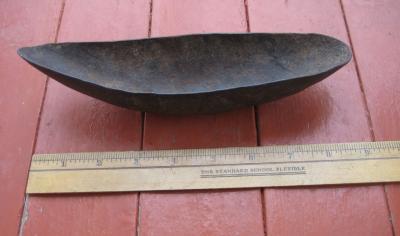
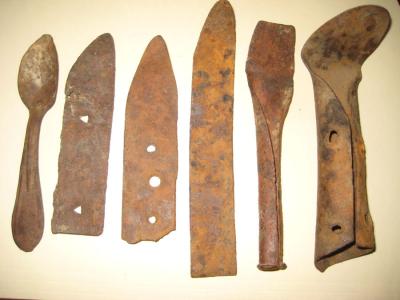
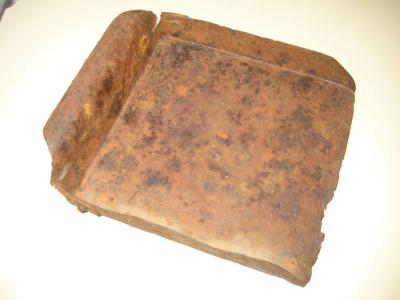
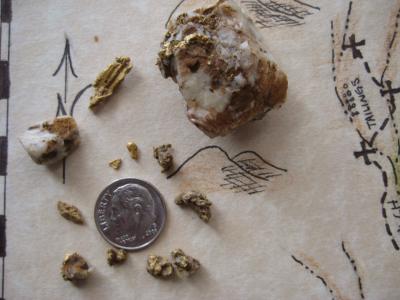
Chinese Coin
in Metal Detecting For Coins & Relics
Posted
Paul,
According to my book, the coin is from Emperor Ch'ang P'ing Wu Chu from the Northern Ch'i Dynasty (550-589 a. d.). The markings are very nearly identical to your coin.
Gary